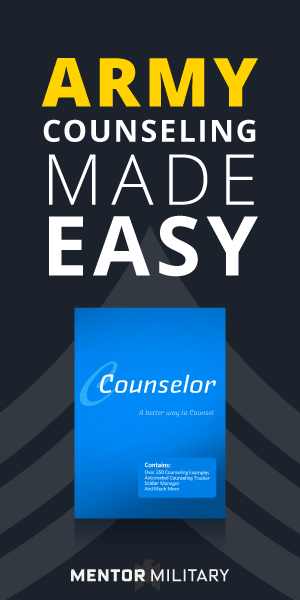Recently we received a request regarding a case of alleged sexual harassment. The Soldier wanted to know what was the best way to report the issue. Unfortunately there is no cut and dry, right or wrong approach. Each issue is a little different depending on the specifics of the incident. In this article we will offer some suggestions. First let’s review the basics.
Reference: AR 600-20
Definition
Sexual harassment is a form of gender discrimination that involves uninvited sexual advances, requests for sexual favors, and other verbal or physical conduct of a sexual nature between the same or opposite genders when—
(1) Submission to, or rejection of, such conduct is made either explicitly or implicitly a term or condition of a person’s job, pay, career, or
(2) Submission to, or rejection of, such conduct by a person is used as a basis for career or employment decisions affecting that person, or
(3) Such conduct has the purpose or effect of unreasonably interfering with an individual’s work performance or creates an intimidating, hostile, or offensive working environment.
b. Any person in a supervisory or command position who uses or condones implicit or explicit sexual behavior to control, influence, or affect the career, pay, or job of a Soldier or civilian employee is engaging in sexual harassment. Similarly, any Soldier or civilian employee who makes deliberate or repeated unwelcome verbal comments, gestures, or physical contact of a sexual nature is engaging in sexual harassment.
Case Study
A supervisor has made several unwanted comments of a sexual nature and has asked a subordinate out on a date several times. The subordinate thus far has refused the advances, feels uncomfortable and is worried about reporting the incidents or directly addressing the issue with the supervisor for fear of retribution.
Action Plan
Step 1
Sit down and record all the information you can remember about the incident or incidents (time, date, comments, witnesses, etc). Transcribe this information into a memorandum for record. Ensure the document is factual and is well organized. The document should also contain the action you would like to see taken to resolve the issue i.e.,
I would just like the harassment to stop.
I would like to be moved to another platoon because I no longer feel comfortable around this supervisor.
I respectfully request the supervisor be given some form of formal punishment and I be moved under another supervisor.
Step 2
Once you have your thoughts organized and your specifics of the incident outlined in your memorandum you need to decide how you would like to handle the situation.
In some cases the Soldier may feel comfortable enough to approach the supervisor and discuss the matter in a professional manner. Usually handling an issue at the lowest level is the best approach. Unfortunately this approach leaves the Soldier vulnerable to potential retribution.
You could approach a senior leader and discuss the issue with them and ask them to be present at the meeting with the supervisor. You could also make an appointment with the IG and ask them to review your information and provide you guidance on the issue. You can make it clear to them that you do not want them to take any action unless you specifically ask them to do so. By following this approach you both fully understand the situation, and have established your complaint should retribution occur at a later date.
Step 3
Take your concerns to the chain of command so they can be properly addressed with the Supervisor.
In closing
The chain of command takes a dim view of harassment because they understand the negative impact it has on the Soldier and the unit. Leaders tend to be very proactive in these matters. Once the chain of command becomes involved the issue is usually resolved rather quickly.
Once the issue is addressed by the chain of command they will typically do a follow up with you to see if the problem was resolved to your satisfaction.
I would encourage to read AR 600-20 as it pertains to Sexual Harassment and the Whistleblower protection act.














